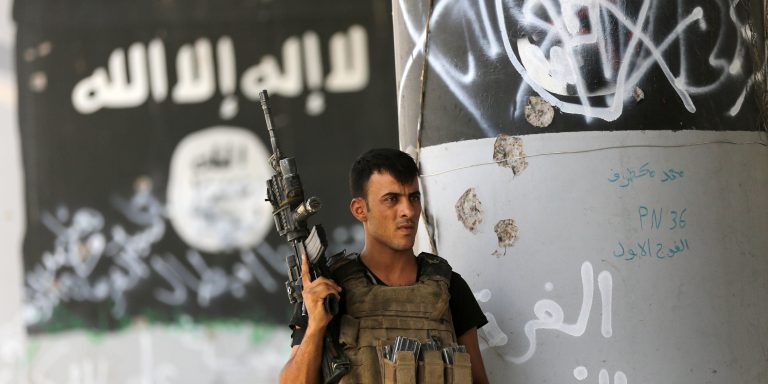INTELBRIEF
August 16, 2018
IntelBrief: The Challenging Math of Islamic State Fighters

- Recent estimates put the number of Islamic State fighters still in Syria and Iraq from as low as 20,000 to over 30,000.
- From at least 2014 estimates of the group’s strength have varied greatly, with the coalition against the Islamic State having somehow reportedly killed 100% of the group’s estimated members several times.
- Obtaining accurate numbers matter, as they are used to assess progress, fund operations, and effectively prepare for future threats.
- The need for continued counterterrorism efforts, while at the same time devoting more resources for humanitarian aid, will remain one of the largest global challenges of the foreseeable future.
.
In December 2017, the spokesman for the U.S.-led Combined Joint Task Force-Operation Inherent Resolve—the coalition fighting the so-called Islamic State—stated, ‘there's about 1,000 across Iraq and Syria’ in terms of Islamic State fighters. The previous estimate by the coalition had been 3,000. Now, in August 2018, after years of battlefield success against the terrorist group both in Iraq and Syria, a Defense Department paper estimates there are 15,500 to 17,100 Islamic State fighters in Iraq, and approximately 14,000 in Syria. The wild swings in estimates have been a hallmark of the anti-Islamic State (IS) campaign since its inception in 2014.
The differences have produced bizarre assessments over time, with the U.S. at one time estimating IS had 25,000 members, then stating it had killed approximately 25,000–yet still somehow reporting 25,000 members remained. In February 2017, Gen. Raymond Thomas, the head of U.S. Special Operations Command, stated the coalition had killed 60,000 Islamic State fighters in total, an increase of 10,000 from a December 2016 estimate; yet in the summer of 2016, the Pentagon estimated there were 15,000 to 20,000 fighters left. The different numbers came from different sources using different methodologies, as well as the simple fact that it is difficult to accurately assess the numbers of an insurgency across two war zones. Adding to the confusion were unofficial estimates and statements, as well as discrepancies in reporting related to the number of ‘foreign fighters’ versus the overall total numbers of IS members.
The only clear conclusion from the lack of clarity is that IS was and remains likely much larger than many had reported. In 2014, the Syrian Observatory for Human Rights estimated the then-growing Islamic State had perhaps 100,000 fighters. Many others, including the U.S., initially offered far lower numbers. At immense cost to local coalition partners in both countries, the coalition has pushed the Islamic State out of power in both Iraq and Syria, but the group is by no means powerless. Even as it has slipped from a proto-state back to an insurgent group, it remains among the most powerful terrorist groups in history, with no shortage of weapons or wiling recruits.
A separate recent report by the U.N. Analytical Support and Sanctions Monitoring Team shows the persistent strength of the Islamic State. The report estimates there are still between 20,000 and 30,000 Islamic State members in Iraq and Syria. The group also has perhaps 4,000 members in Libya, 3,500 to 4,500 in Afghanistan, and several hundred in Yemen. Even a handful of hardened fighters can create immense security challenges; this means areas in Syria and Iraq will remain quasi war-zones for the foreseeable future, threatening badly needed reconstruction and aid. The U.N. report made specific note of pockets of Islamic State fighters in the large Rukban refugee camp in southern Syria near the Jordanian border. Such cells would present considerable challenges to Jordan’s security forces, which are operating at a high tempo against a relentless threat matrix. The need for continued and extensive counterterrorism efforts, while devoting even more resources to help the millions displaced in both Iraq and Syria, will be one of the greatest security/humanitarian challenges of the foreseeable future.
.
For tailored research and analysis, please contact: info@thesoufancenter.org
[video width="960" height="540" mp4="https://thesoufancenter.org/wp-content/uploads/2018/08/IB-0816.mp4" poster="https://thesoufancenter.org/wp-content/uploads/2018/08/AP_16249626161594.jpg"][/video]